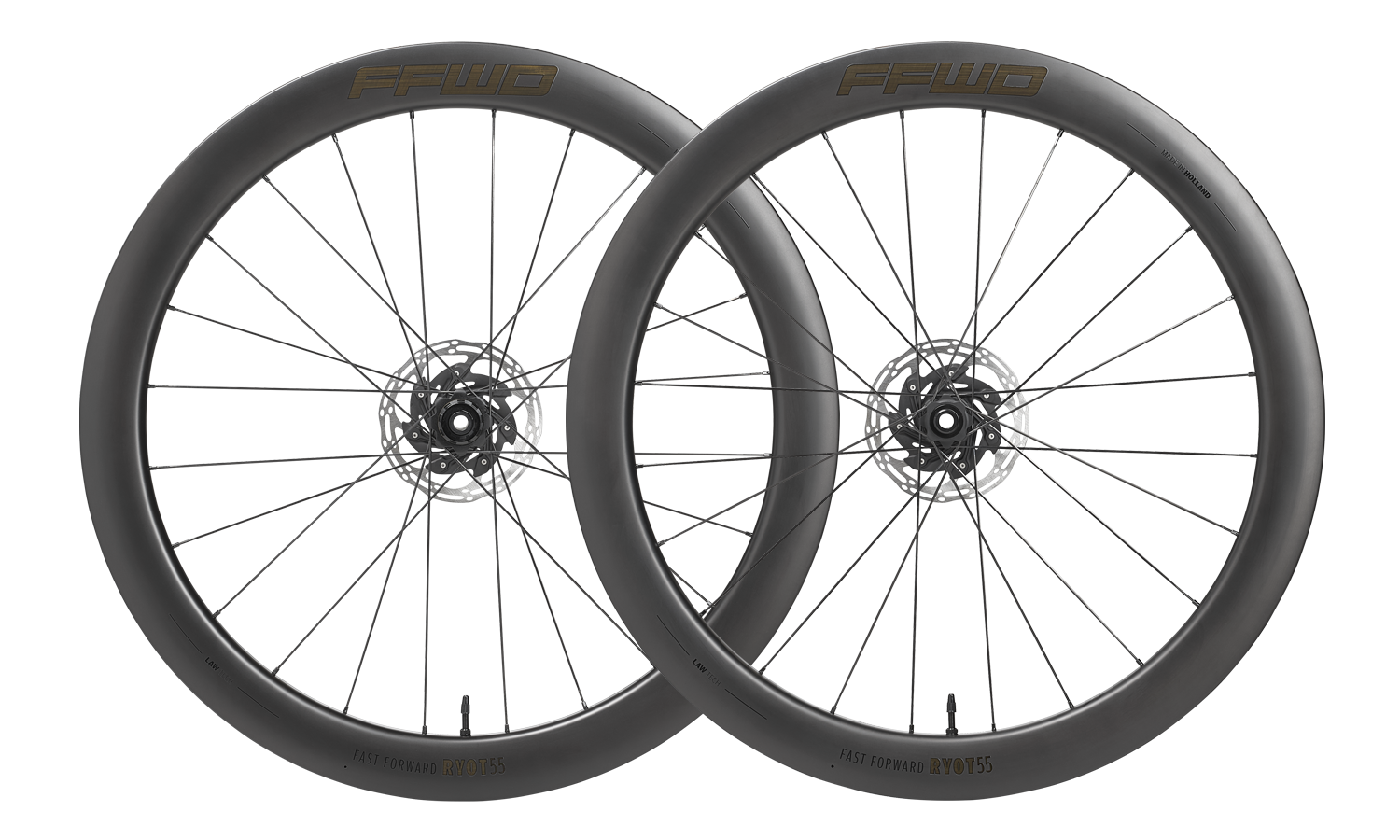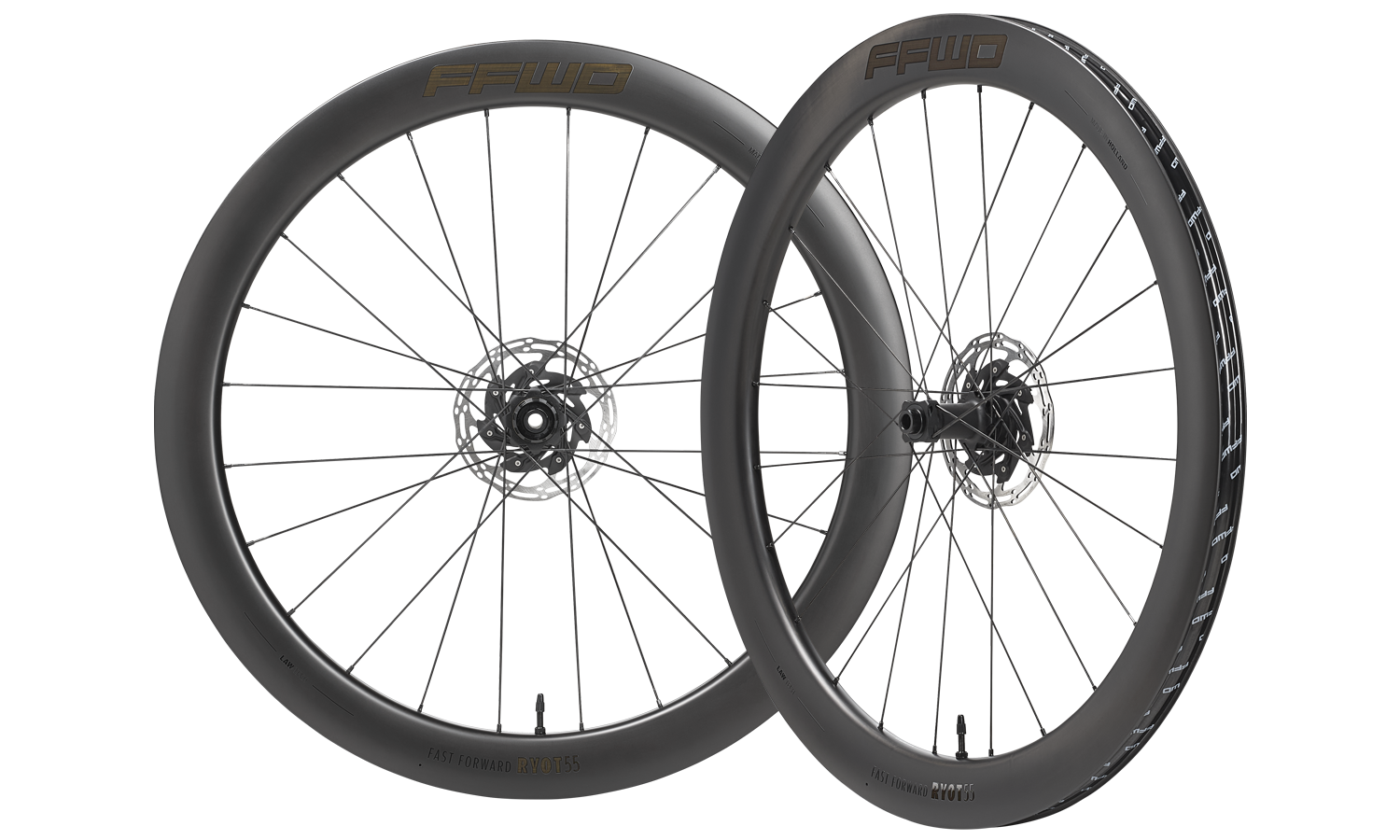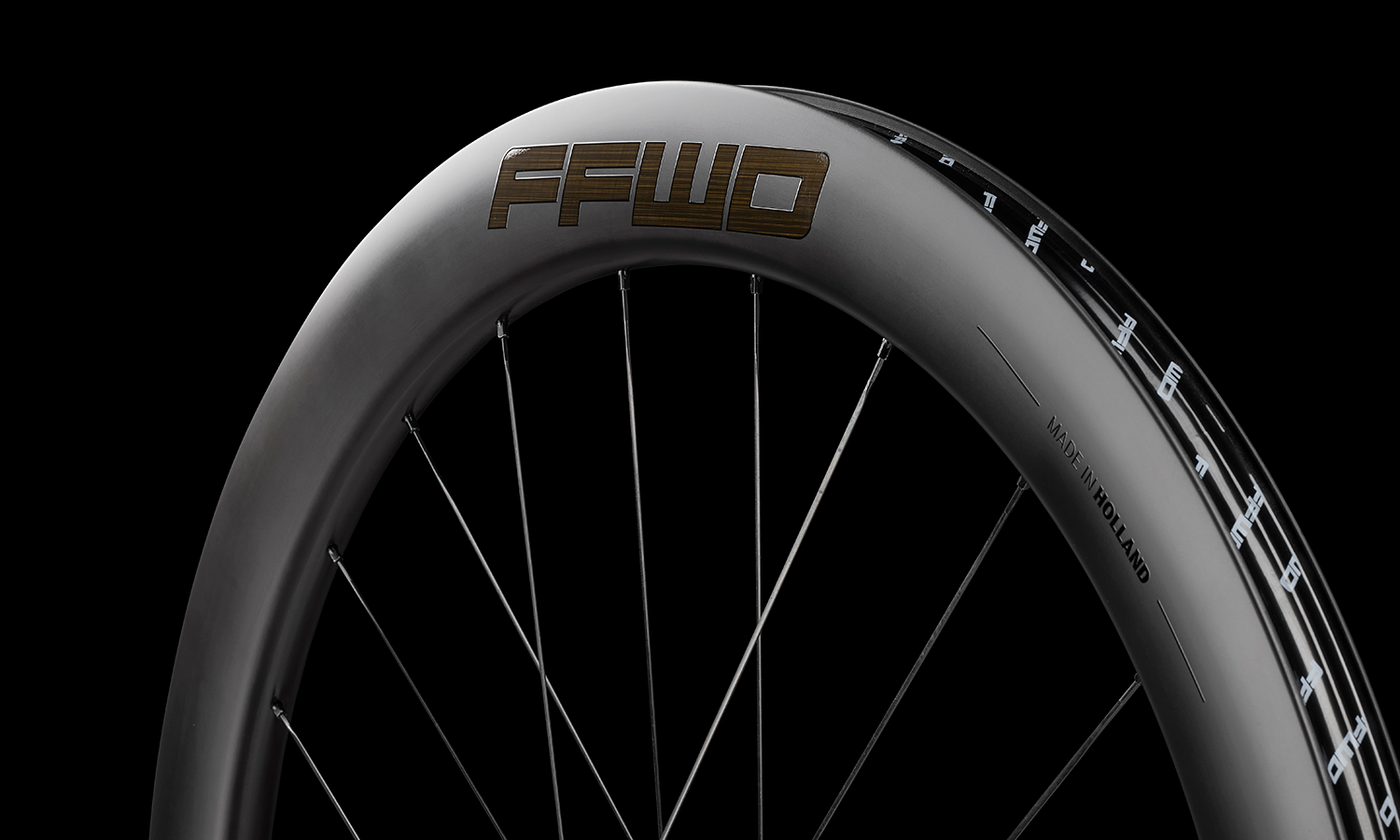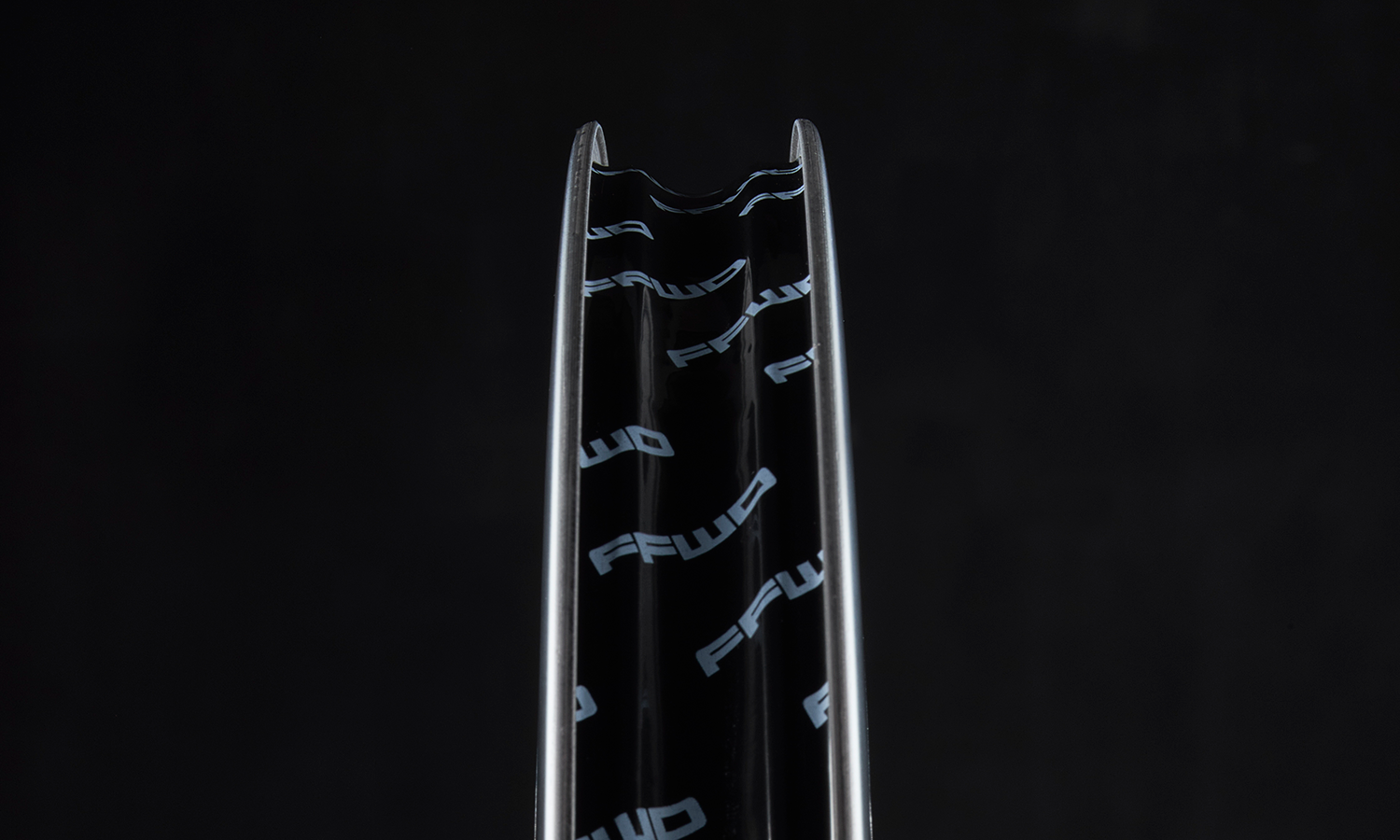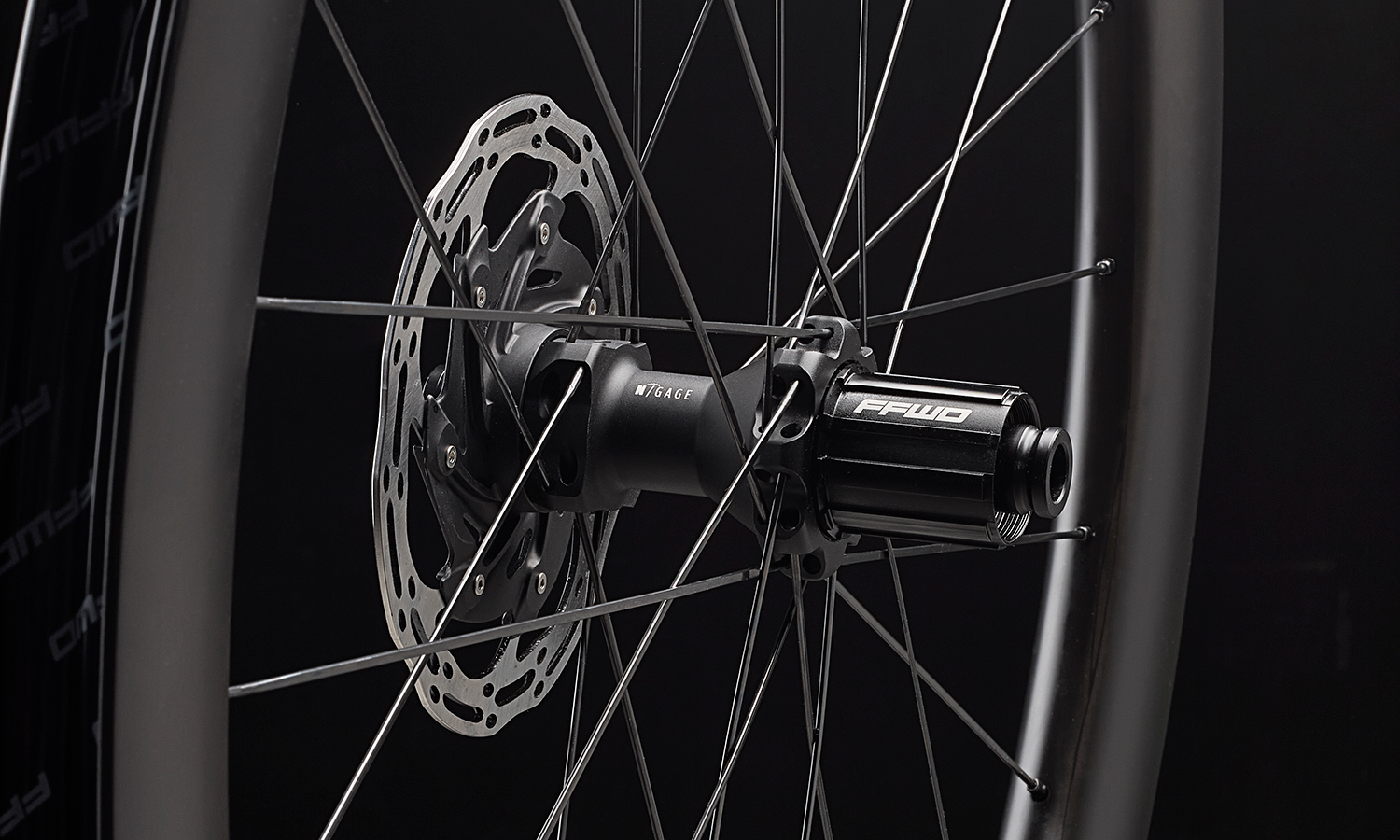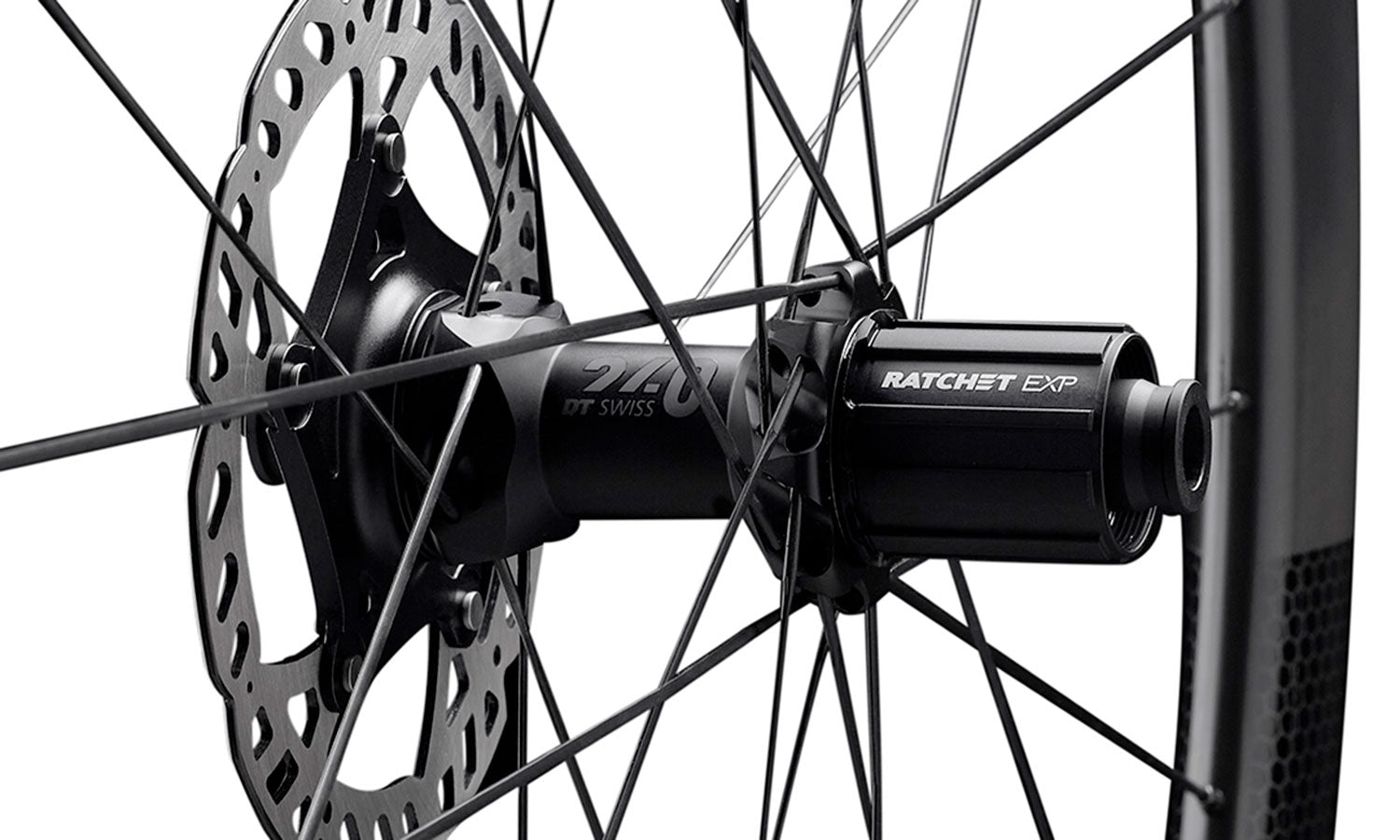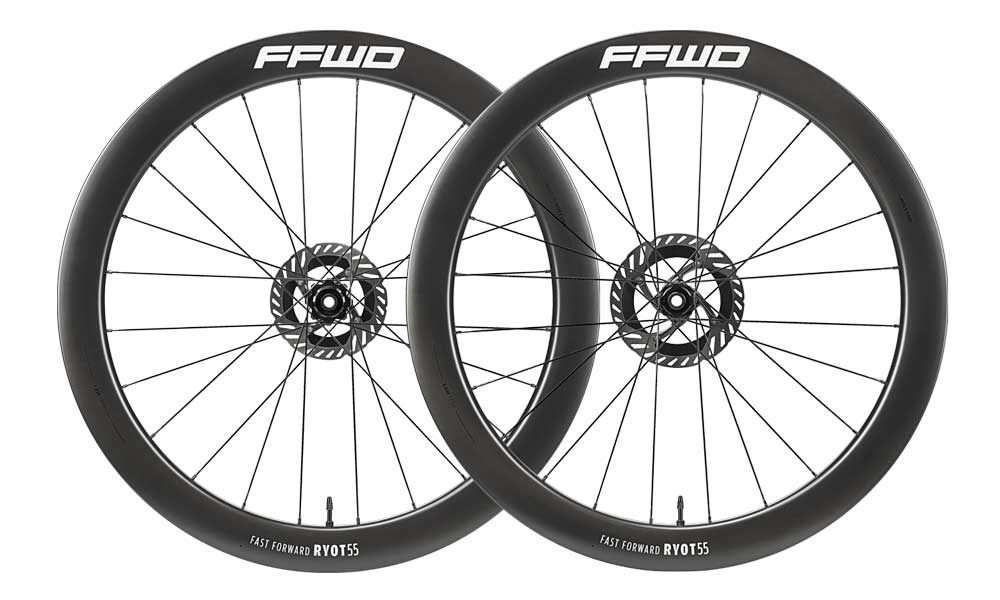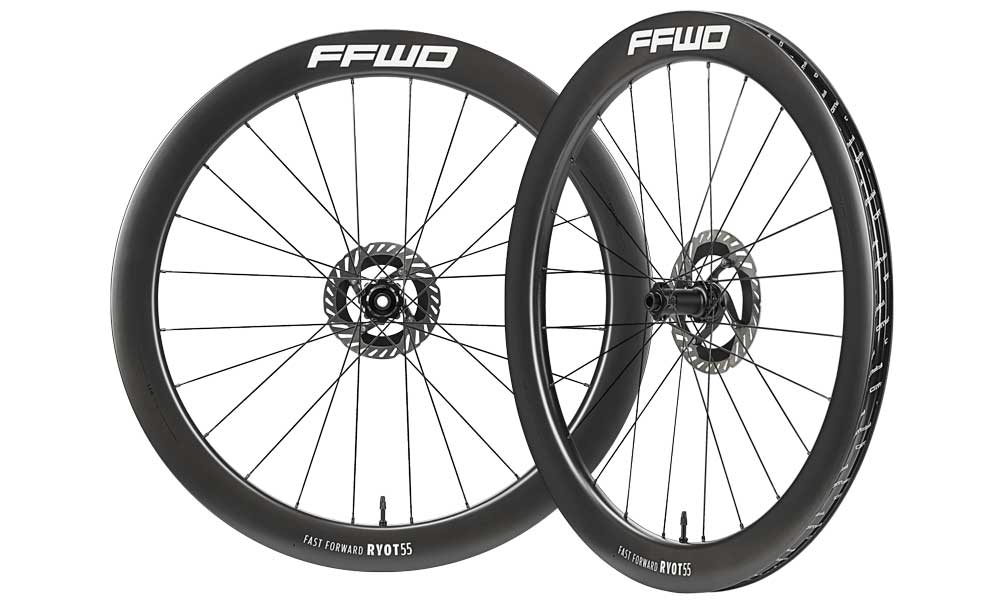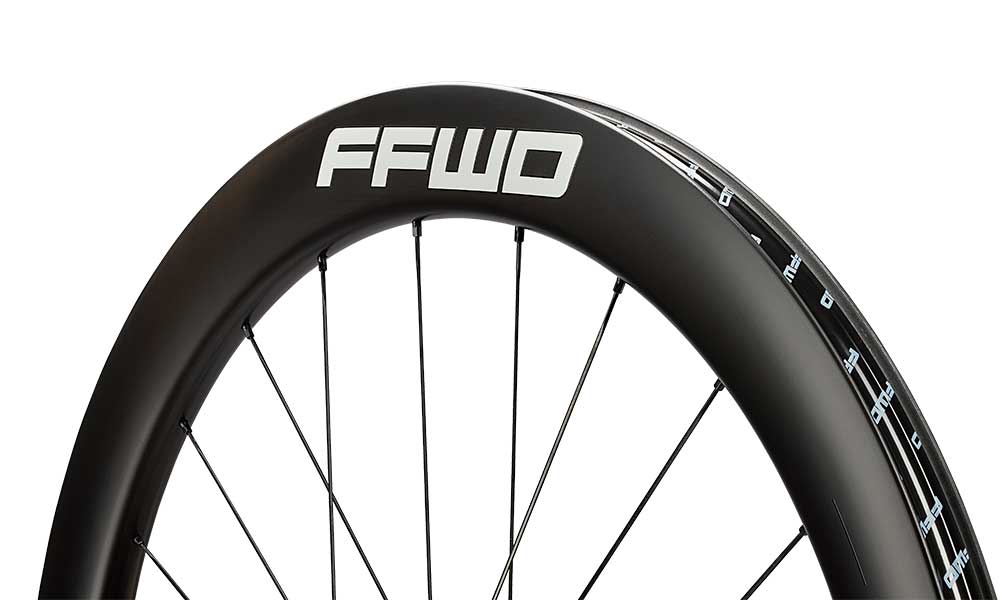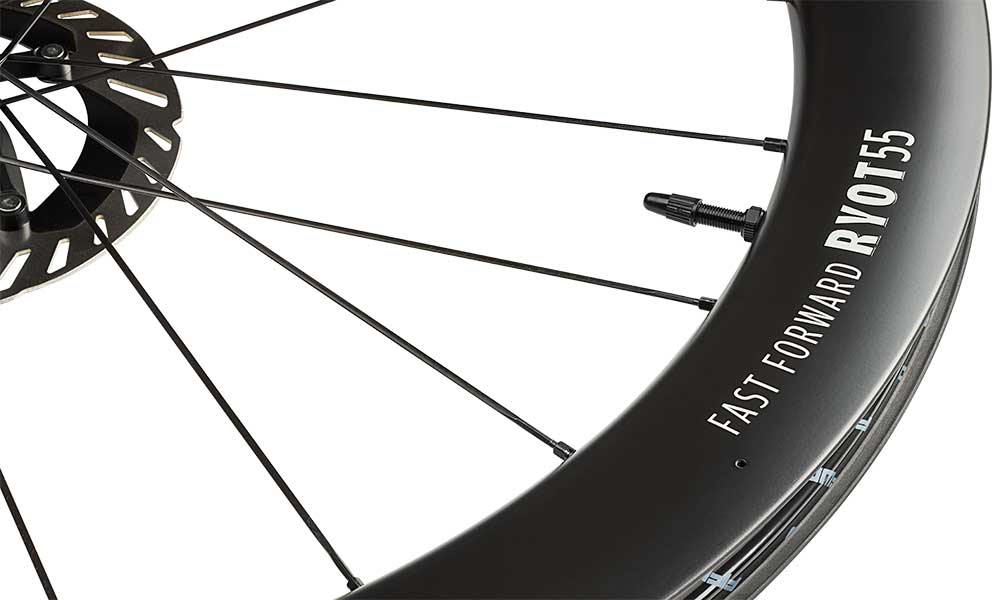FFWD's new Laminar Airflow Wing (LAW) rim profile has been developed to improve aerodynamic performance with current used tire widths and to be faster in a variety of wind angles you will face in the real world.
The new LAW in aerodynamics beats the competition in the real world!
Double click video to watch full screen!
Developing the new aero standard
Going into the development we knew our F6 with DARC technology was leading in aerodynamics up to 25mm and put our goal at setting the new LAW in aerodynamics.
Building a new aero profile started with a CFD (Computational Fluid Dynamics) analysis and five different rim shapes to come to the fastest result. To go fast is part of our DNA so all efforts were set to achieve this. RYOT55 is the new standard in aerodynamics within the road wheel category. Saving up to a spectacular 5 watts at some yaw angles and 3,6 watts on average the RYOT55 beats its predecessor in all real-world conditions.


Not only did we compare the new LAW profile against ourselves but took several competitors into the wind tunnel and put them head to head! On all real-world wind angles the RYOT55 provides the most aerodynamic performance and therefore saves you energy to finish stronger!
On average RYOT55 saves you between 1,5 and 2,7 watts in direct duel with comparable models from Zipp, Roval and Fulcrum. There's your proof how to be faster!

Saving watts is saving energy
To go fast on your bike you'll have to put energy on your pedals! The RYOT55 supports you by saving up to 2,7 watts of energy compared to other wheels. With less energy you can achieve the same result or use it to stand out! This means you can go even faster at any given moment with the same level of energy or you save this energy for the final when you need to outsprint your competitors at the finish (or your cycling buddies before the coffee stop).
Real World Conditions
When testing in a wind tunnel it is important to measure the conditions of the real world. From independent research (1) we know that yaw angles between 0 and 10 degrees are likely to experience in more than 70% of the time when riding your bike. The measurements are done at three different speed levels which showed us that the aerodynamics of the LAW Tech profile do not only perform better at the highest speed (48.6 km/h) but even bring more efficiency when riding at a lower speed (38.5 km/h) (2) Now you know how to beat your friends even when you're not a professional rider and perform at your real-world speed!
-
Based on the 2015 Catalyst Cycling LLC's white paper 'The Mathematical Model of Yaw Angle Distributions for Bicycle Wheels' (Zach McCormick, Nick McCormick, Justin Clarck). Catalyst notes that yaw angles between 0-10 will always be more prevalent than 10-20 or between 20-30. "Even at the IronMan World Championships in Kona HI, a rider spends 72,1% of the bike leg experiencing yaw angles below 10", according to Catalyst.
-
The wind tunnel test has been conducted based on fixed values for each run. Having tested at three different speed levels the graphs show the results at 48,6km/h (13,5m/s). Wheels have been in the same bike for each run with the same tire and tire pressure (Schwalbe Pro One 25mm). Due to the 21mm internal width of the RYOT55 the effective width of the 25mm test tire becomes 28,2mm. Following the most common yaw angles of the real world the test has been focused on yaw angles between 0 and 10 degrees.

